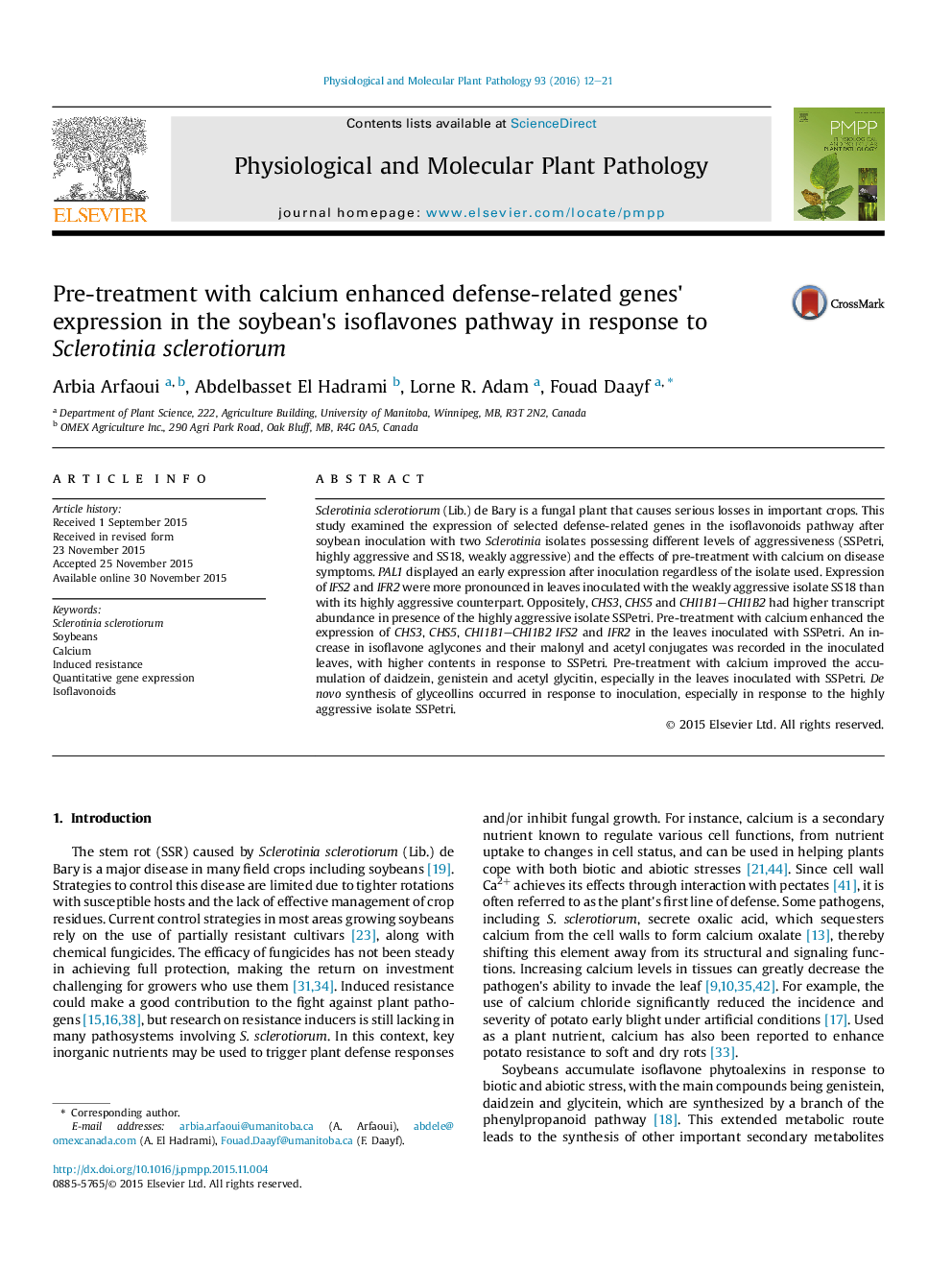| Article ID | Journal | Published Year | Pages | File Type |
|---|---|---|---|---|
| 2836213 | Physiological and Molecular Plant Pathology | 2016 | 10 Pages |
•Sclerotinia sclerotiorum affected genes in the phenylpropanoid pathway leading to isoflavones.•Calcium pre-treatment induced daidzein, genistein, acetyl glycitin in infected leaves.•Higher isoflavone concentration recorded in response to the highly-aggressive isolate.
Sclerotinia sclerotiorum (Lib.) de Bary is a fungal plant that causes serious losses in important crops. This study examined the expression of selected defense-related genes in the isoflavonoids pathway after soybean inoculation with two Sclerotinia isolates possessing different levels of aggressiveness (SSPetri, highly aggressive and SS18, weakly aggressive) and the effects of pre-treatment with calcium on disease symptoms. PAL1 displayed an early expression after inoculation regardless of the isolate used. Expression of IFS2 and IFR2 were more pronounced in leaves inoculated with the weakly aggressive isolate SS18 than with its highly aggressive counterpart. Oppositely, CHS3, CHS5 and CHI1B1–CHI1B2 had higher transcript abundance in presence of the highly aggressive isolate SSPetri. Pre-treatment with calcium enhanced the expression of CHS3, CHS5, CHI1B1–CHI1B2 IFS2 and IFR2 in the leaves inoculated with SSPetri. An increase in isoflavone aglycones and their malonyl and acetyl conjugates was recorded in the inoculated leaves, with higher contents in response to SSPetri. Pre-treatment with calcium improved the accumulation of daidzein, genistein and acetyl glycitin, especially in the leaves inoculated with SSPetri. De novo synthesis of glyceollins occurred in response to inoculation, especially in response to the highly aggressive isolate SSPetri.
